Major Chakras or Energy Centers
Major Chakras or Energy Centers are actually major acupuncture points. Chakras are very important parts of the energy body. The chakras in human body correspond to various organs and glands of the body based on their positions.
Chakras serve as entry points for life energy or "Prana" into your body.
The major chakras not only control and energize the vital organs of the body but also control and affect a person’s psychological and spiritual conditions. Just as the visible physical body has vital and minor organs, the energy body has major, minor and mini chakras. Master Choa Kok Sui’ explains about 12 Major chakras, many minor and mini chakras in Pranic Healing and Arhatic Yoga.
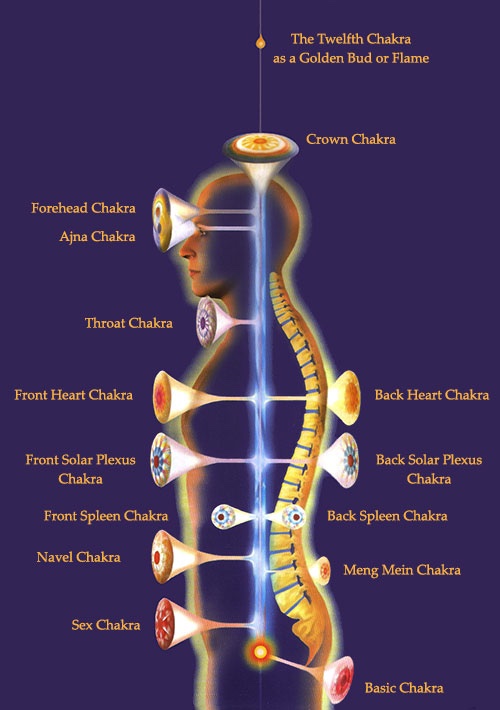
-
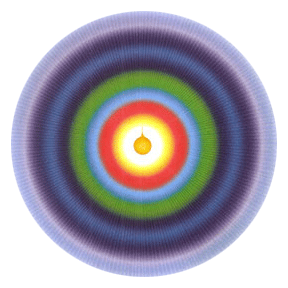
12th Chakra
The 12th chakra looks like a golden star. Sometimes it is called the “Soul Star.” When a person becomes spiritually more mature, the golden star evolves into a golden pearl, a golden ball, a golden bud, or a golden flame. When it is activated, it is called the Pentecostal Fire. In Christian terminology, this is called the Pentecostal fire. (Acts 2:1-4).
Read more about Twelfth Chakra -
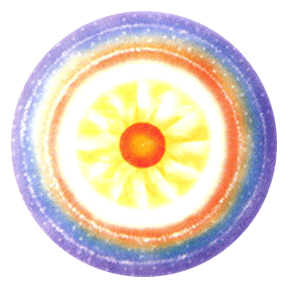
Crown Chakra
The crown chakra is located at the top of the head. In Chinese medicine, it corresponds to the acupuncture point DU (GV) 20.
In Taoist yoga, it is known as bai hui, which literally means “meeting point for the hundreds.” Bai hui is the entry point of Tian [God] chi. The downpouring of the spiritual energy or Tian chi is called in Christian terminology the “descent of the holy spirit.” Therefore, the crown chakra is a very important spiritual center.
A certain degree of physical and psychological preparations is needed to activate the crown chakra.
To tread the spiritual path without inner and outer purifications will adversely affect the physical body and will eventually result also in psychological imbalance. This is the meaning of the verse in Matthew 9:17. “Do not put new wine in an old wine bag.”
The Sanskrit term for crown chakra is sahasrara chakra. In Tamil (Southern India), it is called Pootellu varmam.
In Kabbalah it is called Kether . The divine name of Kether is Ehieh.
Read more about Crown Chakra -
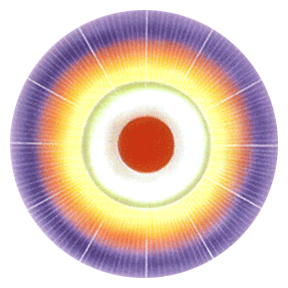
Forehead Chakra
Forehead chakra also none as the Third Eye.
The forehead chakra is located at the center of the forehead. In Chinese medicine, it corresponds to the acupuncture point DU (GV) 24.
In Taoist yoga, the forehead chakra corresponds to shen ting, which means “hall of the divine.”
The forehead chakra in the Indian oral tradition is called the Lalaata chakra. In Tamil (Southern India), it is called Kumbidu kaala varmam.
In Kabbalah it is called Chokmah. The divine name of Chokmah is Yehovah.
Read more about Forehead Chakra -
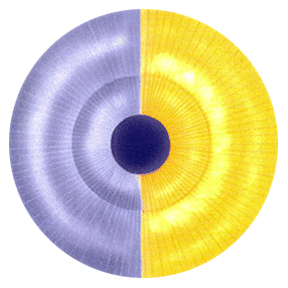
Ajna Chakra
The ajna chakra is located at the area between the eyebrows.
In Chinese medicine, it corresponds to the acupuncture point M-HN3.
In Taoist yoga, the ajna chakra corresponds to yin tang, which means “hall of impressions.”
Ajna chakra is a Sanskrit term. In Tamil (Southern India), its correspondence is Thilardha varmam.
In Kabbalah it is called Binah. The divine name of Binah is Elohim.
Read more about Ajna Chakra -
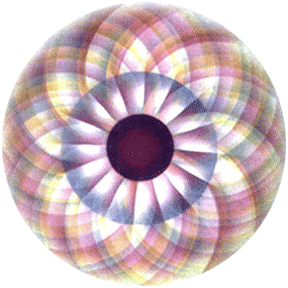
Throat Chakra
The throat chakra is located at the center of the throat. In Chinese medicine, it corresponds to the acupuncture point RN (CV) 23.
In Taoist yoga, the throat chakra corresponds to lianquan, which means “stream of purity” or “clear fountain.”
The Sanskrit term for the throat chakra is vishuddhi chakra. In Tamil (Southern India), it is called ottu varmam.
In Kabbalah it is called Daath. The divine name of Daath is Yehovah Elohim.
Read more about Throat Chakra -
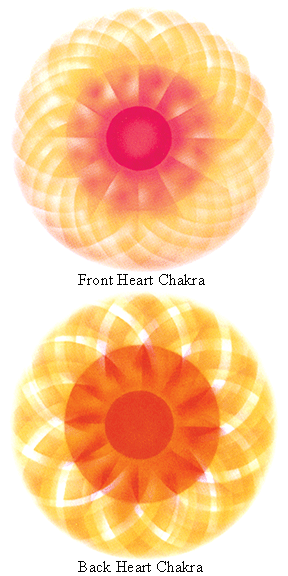
Heart Chakra
The heart chakra is located in front of the heart or at the center of the chest. There is also a back heart chakra, which is located at the back of the heart.
Front heart chakra: in Chinese medicine, it corresponds to the acupuncture point RN (CV) 18.
Back heart chakra: in Chinese medicine, it corresponds to the acupuncture point DU (GV) 10.
In Taoist yoga, the front heart chakra corresponds to yu tang, which means “hall of jade.” The Sanskrit term for the front heart chakra is Anahata chakra.
In Tamil (Southern India), its correspondence is kadhir.
The back heart chakra, in Taoist yoga, corresponds to ling tai, which means “divine or spirit’s platform” or “Temple of the Soul.” In Tamil, the correspondence of the back heart chakra is Mel kaala varmam.
In Kabbalah it is called Chesed. The divine name of Chesed is Elohim El.
Read more about Heart Chakra -
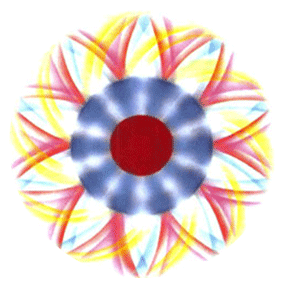
Solar Plexus Chakra
The solar plexus chakra is located at the hollow area between the ribs. The back solar plexus is located at the back of the front solar plexus. The term solar plexus chakra shall mean both the front and the back solar plexus chakra.
Front solar plexus: in Chinese medicine, it corresponds to the acupuncture point RN (CV) 12.
Back solar plexus: in Chinese medicine, it corresponds to the acupuncture point DU (GV) 7 and DU (GV) 6, respectively.
In Taoist yoga, the front solar plexus chakra corresponds to zhong wan, which means “center of stomach.”
The back solar plexus chakra in Taoist yoga corresponds to zhong shu, which means “center of body,” or with ji zhong, which means “center of spine.” The Sanskrit term for the solar plexus chakra is Manipura chakra. In Tamil (Southern India), the correspondence of the front solar plexus chakra is Ner varmam, while the back solar plexus chakra is Sangudhiri kaala varmam.
In Kabbalah it is called Gevurah. The divine name of Gevurah is Elohim Gibor .
Read More about Solar Plexus Charka -
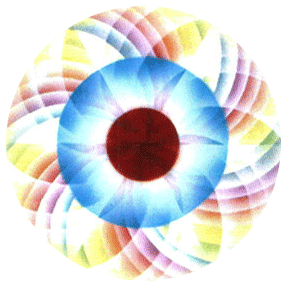
Spleen Chakra
The spleen chakra is located at the center of the left bottom rib. The back spleen chakra is located at the back of the front spleen chakra.
Front spleen chakra: in Chinese medicine, it corresponds to the acupuncture point SP 16.
Back spleen chakra: in Chinese medicine, it corresponds to the acupuncture point BL 50.
In Taoist yoga, the front spleen chakra corresponds to fu ai, which means “abdomen of depression.” The back spleen chakra in Taoist yoga corresponds to wei cang, which means “stomach’s storage.”
The correspondence of the spleen chakra in Sanskrit is Prana chakra. In Tamil (Southern India), it is called kaareeral varmam.
In Kabbalah it is called Netzach. The divine name of Netzach is Yehovah Tzabaoth.
Read more about Spleen Chakra -
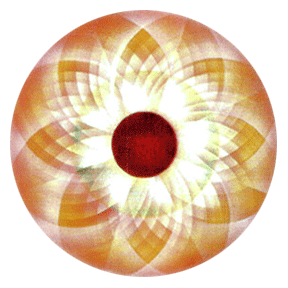
Navel Chakra
The navel chakra is located at the navel. In Chinese medicine, it corresponds to the acupuncture point RN (CV) 8. In Taoist yoga the navel chakra corresponds to shen que, which means “divine vault.” The correspondence of the navel chakra in Tamil (Southern India) is Aama kaalam.
In Kabbalah it is called Tiphareth. The divine name of Tiphareth is Aloah va Daath.
Read more about Navel Chakra -
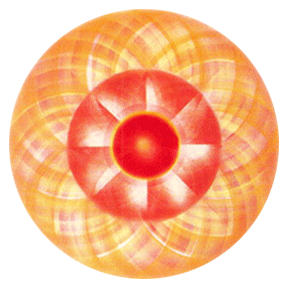
Meng Mein Chakra
The meng mein chakra is located at the back of the navel. In Chinese medicine, it corresponds to the acupuncture point DU (GV) 4.
In Taoist yoga, meng mein chakra corresponds to ming men, which means “gate of life.”
The correspondence of the meng mein chakra in Tamil (Southern India), is Kachai varmam.
In Kabbalah it is called Hod. The divine name of Hod is Adonai Tzabaoth.
Read more about meng mein Chakra -
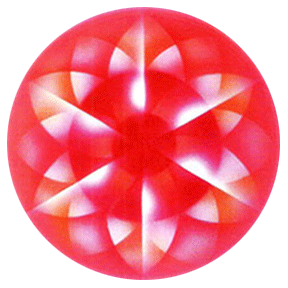
Sex Chakra
The sex chakra is located at the pubic area. In Chinese medicine, it corresponds to the acupuncture point RN (CV) 2.
In Taoist yoga, the sex chakra corresponds to qu gu, which means “crooked bone.”
The correspondence of the sex chakra in Sanskrit is Swadhishtana chakra. In Tamil (Southern India), it is called Kuthu varmam.
In Kabbalah it is called Yesod. The divine name of Yesod is Shaddai El Chai.
Read more about Sex Chakra -
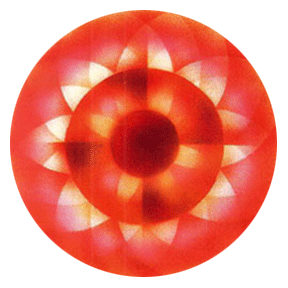
Basic Chakra
The basic chakra is located at the base of the spine or coccyx area. In Chinese medicine, it corresponds to the acupuncture point DU (GV) 1.
In Taoist yoga, the basic chakra corresponds to Chang giang, which means “abundance in strength.”
The Sanskrit term for the basic chakra is “Mooladhara chakra.” Its correspondence in Tamil (Southern India) is Putti kaalam.
The basic chakra, in the Indian tradition, is symbolized by an elephant. This is why in the Taoist tradition it is called “abundance in strength.”
In Kabbalah it is called Malkuth. The divine name of Malkuth is Adonai Malkuth.
Read more about Basic Chakra
